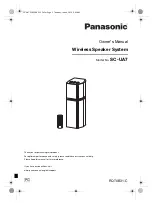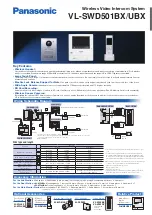
Page 2
HOW IT WORKS
Pure water contains nothing but H
2
0. But water, as it comes out of the ground, is rich in a multitude of minerals. Minerals
such as calcium and magnesium are the main components of hard water, and the cause of scale formation and other
problems.
There are three basic methods used to control the problem of hardness and specifically scale formation.
I
ON
E
XCHANGE
:
One method is to remove the calcium and magnesium from the water through ion exchange (the traditional water
softener). This method requires the use of a resin filled tank with a high concentration of salt ions. As the water flows
through the resin tank the salt ions (typically sodium) are exchanged for the calcium or magnesium ions. This lowers the
concentration of the minerals that cause scale and therefore inhibits scale formation.
C
HEMICAL
A
DDITION
:
A second method used to control hard water scale is the addition of chemicals (such as phosphates) to the water. These
materials chemically alter the scaling characteristics of the calcium or magnesium, allowing the concentration of the
minerals to stay the same while still reducing scale formation and its affects.
Both of the above methods require the use of consumable materials to change the makeup of the water. For these
devices to function properly, the homeowner must continuously replenish the salts or chemicals as well as perform
periodic maintenance on the equipment. In addition to these inconveniences, the chemicals and salts discharged into the
effluent water present problems downstream to the municipal water treatment facility and the environment. Many U.S.
cities have been enacting and/or evaluating environmental legislation to limit or reduce the levels of chemicals or salts that
result from these types of water treatment methods.
E
LECTRIC
P
OTENTIAL
:
A third method used to treat the hard water problems associated with scale utilizes changes in electrical potential in the
water to produce the affects of chemical addition. The electric potential applied changes the scaling characteristics of the
calcium or magnesium without the removal of these ions or the addition of chemicals.
Magnets
Bar magnets were the first types of equipment used to generate electric potential changes in water. Bar magnets have
been used with limited success to inhibit scale formation. The fixed magnetic field of a bar magnet creates electric
potential changes in the water only when the water moves through the magnetic field. Electromagnets function in much
the same way as bar magnets, but the magnetic field is created by passing a current through a coil, essentially creating a
more powerful fixed magnetic field. Inherently, fixed magnetic fields are limited to a narrow range of applications, pipe
sizes and water flow rates.
Permanent bar magnets and electromagnets have been promoted as a method of “treating” hard water, but they do not
treat the vast and complex array of mineral contents and concentrations found in water. Particles can also build up inside
the pipe where the magnet is placed, eventually causing blockage at the very point it is supposed to be doing its job.
Electrostatic Devices
Electrostatic devices create an electric potential in the water between two electrodes. One electrode is mounted in the
water stream in the center of the pipe housing, while the pipe itself acts as the other electrode. The device applies a
voltage across the two electrodes to create the electric potential in the water. This electrostatic approach was an
improvement upon the bar magnets and electromagnets, but increased the initial cost considerably while not dramatically
improving the range of effective conditions.
ClearWave™
The ClearWave™ water conditioning system operates on similar principles as the magnets and electrostatic devices. But
unlike those previously mentioned, the ClearWave™ uses microprocessor technology to electronically generate inaudible
wave-forms which help keep calcium carbonate particles (scale) dissolved or suspended in water. With ClearWave™, the
electric field generated is always being applied to the water, while a magnetic field relies on the movement of water to
produce the electric potential changes.
Summary of Contents for CLEARWAVE CW-HD-1
Page 7: ...Page 7...


























